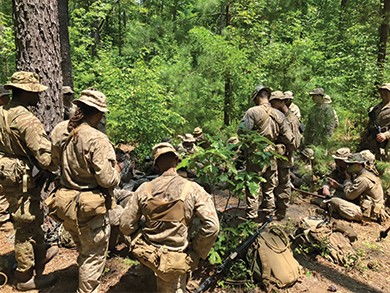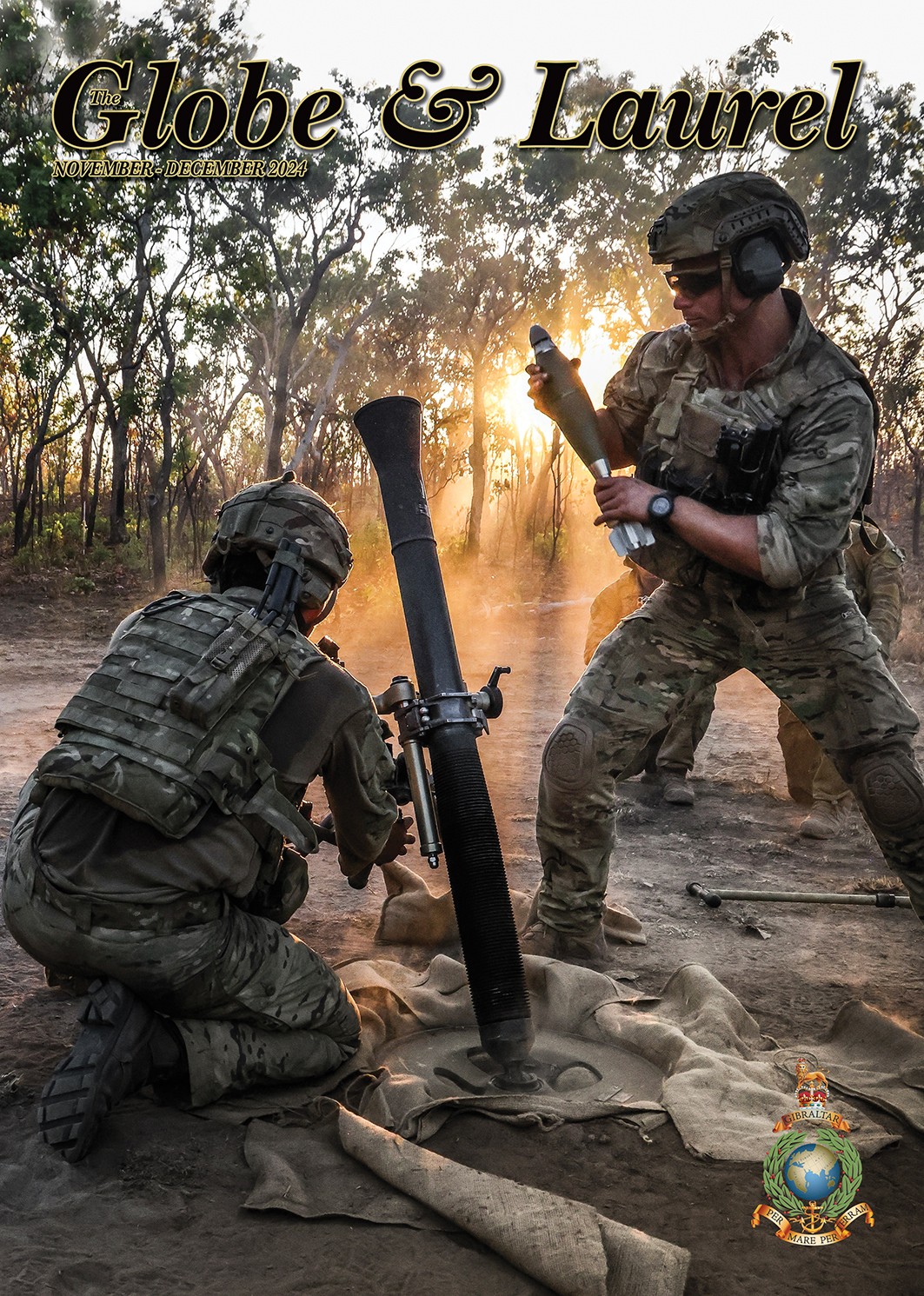The following article is taken from the latest issue of the Globe & Laurel magazine.
Click the button below to discover more.

After 44 arduous weeks at CTCRM, touchdown in Washington DC was long anticipated by YO23 Batch. It was time to swap the chilling temperatures of Wales and the rain of Dartmoor for four weeks of sun, fast-food and heavy weapons. Ex Virginia Tempest is the four-week-long Royal Marines and United States Marine Corps collaboration package designed to support interoperability, maintaining the historic working relationship between the organisations and building new bonds between British and American Young Officers. The exercise has run for over 20 years and unfortunately for the USMC Infantry Officers’ Course (IOC) in Quantico, they haven’t got rid of us yet!
For many, the 96% humidity and sweltering heat was the first thing to hit them but for others it was the sense of achievement of getting this far in Young Officer training. What was once a pipe dream in foundation; when our only hope was to pray our locker contents passed muster, was now a reality.
Once we’d boarded what resembled a classic American school bus, we made the journey over to Camp Barrett, Quantico, which houses and trains over 1500 officers annually; a stark comparison to CTCRM’s 49-strong Batch, who were all on this bus. It was set to be an example of conventional scale that we had not experienced before, with the USMC having 180,000 active members, in comparison to the Royal Marines’ c. 6,500.

The first week consisted of scout sniper lectures from a RM CSgt, currently embedded with the USMC, assisted by an American sniper. Following this the doctrine was brought to life as the Batch fired the Barrett .50 sniper rifle, a weapon like no other we’d fired before. With a shockwave raising the dust around us we each shot eight rounds at over 700 metres range, almost decimating the target by the end. The action didn’t stop there, both the .50 Cal heavy machine gun and grenade machine gun were also up for grabs. After shooting our way through a truckload of ammunition boxes in minutes, there were beaming smiles all round.
We then deployed into the field with our American counterparts for a ten-day field patrolling exercise. On the hunt for an enemy missile system through the dense deciduous forests of Virginia, three ‘platoons’ of soon to be troop commanders waded through the harsh terrain, procuring and filtering their own water, in temperatures of up to 38 degrees. The environment was totally new for us Brits; bitten, stung and sweating through five litres of water a day, it really tested our individual soldiering skills. With a YO killing a poisonous snake that had slithered its way into our harbour on day one, we knew this exercise would be different to what we’d been used to. Days of patrolling were ahead of us, with our biggest challenges being movement and dehydration. On some occasions the terrain only granted us several hundred metres of yomping in several hours, with little to no ambient light. However, the Batch adapted quickly and thoroughly enjoyed both assisting and leading the Americans with recces and offensive actions, leaning on the training we had obtained at CTCRM. The exercise finished with an ambush and a raid on a building complex, followed by a drop-off from the bus two miles from Camp Barrett on the way home. Running with a bergen whilst carrying a casualty stretcher was our final buy out for ENDEX.
Once we had de-serviced our kit, we were straight into a week of life as an IOC student; with calling-for-fire lectures involving everything from 60mm mortars to Close Air Support…………………………..
To find out more about the RMYO Training and further RM activities across the globe, catch up regularly with all the news in the Globe & Laurel Magazine, the Journal of the Royal Marines.
Read more from the Journal of the Royal Marines
For more information, and to read similar stories, visit:
Globe & Laurel – RMA – The Royal Marines Charity (rma-trmc.org)
